If you have ever walked into a furniture store and pointed at a patio set, saying, "I love that wicker material”, you aren't alone. It is one of the most common misconceptions in the world of interior design.
We tend to use "wicker" and "rattan" interchangeably, but they are fundamentally different things, and knowing the difference can save you money and help your furniture last longer.
In this deep dive, we will unravel the definition of wicker, explore the materials that make it, and guide you on how to spot high-quality pieces that will stand the test of time.
What is Wicker?
Simply put, wicker is a technique, not a material.
Wicker refers to the process of weaving natural or synthetic fibers into specific patterns to create furniture, baskets, and decorative items. It is actually one of the oldest furniture-making methods in history, dating back as far as ancient Egypt.
When you see a "wicker chair", you are looking at a chair made using the wicker method, but the actual substance could be anything from palm stems to plastic.
 12 Common types of wicker weaving
12 Common types of wicker weavingThe Common Confusion Between Wicker and Rattan
Here is the easiest way to remember the difference:
-
Rattan is the specific material (a natural, vine-like species native to tropical regions).
-
Wicker is the act of weaving.
Think of it this way: You can have a wicker chair made of rattan, but you cannot have a rattan chair made of "wicker". One is the ingredient; the other is the recipe.
What Materials Are Used to Make Wicker?
Because wicker is a style of weave, manufacturers can use a variety of fibers depending on where the furniture is meant to live.
Natural Wicker (Indoor Use)
Natural fibers offer an unmatched organic warmth, but they are porous. They absorb moisture and can dry out in the sun, making them strictly for indoor or covered porch use.
-
1. Rattan: The most popular natural choice. It is incredibly strong, durable, and flexible, making it the backbone of the indoor furniture industry.
-
2. Willow: Lighter and thinner than rattan. You will most often see willow used for baskets and hampers rather than heavy load-bearing furniture.
-
3. Bamboo: While it looks similar to rattan, bamboo is hollow and stiffer. It is less flexible for intricate weaving, but it is a fantastic, fast-growing, eco-friendly option.
-
4. Reed & Seagrass: These materials offer softer, grass-like textures. They are generally used for decorative accents, rugs, or small storage rather than structural furniture frames.
 Rattan, Willow, and Bamboo Raw Materials Comparison
Rattan, Willow, and Bamboo Raw Materials ComparisonExpert Insight: Not All Rattan is Created Equal (Understanding Grades)
Just because a label says "Natural Rattan" doesn't guarantee quality. Industry experts grade rattan based on density, surface quality, and color consistency:
-
Grade A (The Premium Choice): This rattan has a solid, dense core and a creamy, smooth skin. It absorbs stain evenly and is incredibly difficult to break. It feels cool and smooth to the touch.
-
Grade B & C: These strands often have rough surfaces, "hairy" textures, or dark stains/scars. Manufacturers often paint these heavily to hide imperfections. If you see a rattan chair painted a solid, thick dark color, it is often (though not always) masking lower-grade material.
 Grade A smooth rattan core vs. rough Grade C strands
Grade A smooth rattan core vs. rough Grade C strandsSynthetic Wicker (Outdoor/All-Weather Use)
If you want the wicker look by the pool, you need synthetic materials.
-
Resin Wicker (PE Rattan): This is the gold standard for outdoor furniture. It is a man-made fiber designed to look like natural rattan but withstand the elements.
-
Vinyl/PVC: These are cheaper options often found in big-box stores. They tend to look "plastic-y" and are less durable against UV rays, leading to brittleness over time.
Technical Insight: Always look for High-Density Polyethylene (HDPE) rather than PVC. PVC tends to crack, peel, and release toxins when burned. HDPE is a stronger, recyclable thermoplastic that resists UV radiation and prevents color fading.
 HDPE synthetic wicker repelling water by the pool
HDPE synthetic wicker repelling water by the poolDecoding the Technical Specs: What to Look For
To identify "resort-quality" synthetic wicker, you need to look beyond the surface. Check the product specifications for these two critical features:
-
1. Solution-Dyed (Dyed-Through) Fibers: High-end resin is colored before it is made into strands. This means the color runs all the way through the material (like a carrot). If you accidentally scratch your chair, the scratch will be the same color as the surface. Cheaper versions are just white plastic painted on the outside (like a radish) – one scratch, and the white core is revealed.
-
2. UV Rating: Ask about the "UV Hours". A standard big-box store chair might last 500 hours in the sun before cracking. Quality HDPE wicker is tested for 3,000+ UV hours, ensuring it stays flexible and vibrant for years.
 Dyed-through HDPE (Left) vs. Surface-painted PVC (Right)
Dyed-through HDPE (Left) vs. Surface-painted PVC (Right)Behind the Scenes: The Wicker Production Process
Many consumers assume that in our modern age, wicker furniture is churned out by giant machines. This is a myth.
Whether it is natural rattan or high-tech synthetic resin, wicker furniture is almost entirely handmade. A single dining chair can take a skilled artisan 1 to 3 days to complete. Understanding this labor-intensive process explains the value behind the price tag.
Step 1: Material Preparation
-
For Natural Rattan: The raw rattan poles are harvested, cleaned, and cured. Before they can be shaped, they must be steamed. This "cooking" process softens the fibers, making them pliable like cooked spaghetti, allowing artisans to bend them without snapping.
-
For Synthetic Wicker: The process starts with Extrusion. HDPE pellets (mixed with UV stabilizers and color pigments) are melted and pushed through a mold to create long strands. These can be shaped to look like round reeds, flat straps, or half-round fibers.
 Steaming raw rattan poles to make them pliable
Steaming raw rattan poles to make them pliableStep 2: Constructing the Skeleton (The Frame)
Every great piece needs good bones.
 TIG welding a rust-proof aluminum furniture frame
TIG welding a rust-proof aluminum furniture frameThe Backbone: Why Frame Construction Matters?
The weave is only as good as the skeleton underneath it. While the wicker provides the look, the frame provides the longevity.
-
Aluminum vs. Steel: Always choose powder-coated aluminum for outdoor use. Unlike steel, aluminum cannot rust. If you buy a steel-framed wicker set, the eventual rust spots will bleed through and stain your beautiful white wicker.
-
Wall Thickness (Gauge): Quality frames use aluminum tubes with a wall thickness of at least 1.2mm to 1.5mm. Anything thinner (0.8mm) may buckle under heavy weight or high winds.
-
Welded vs. Screwed (Knock-Down): The strongest furniture comes with fully welded frames. "Knock-down" furniture (flat-pack items you assemble with screws) is convenient for shipping but will inevitably loosen and wobble over time due to the natural expansion and contraction of materials.
Step 3: The Art of Hand-Weaving
This is the most critical phase. There is no machine currently in existence that can replicate the complex tension and wrapping required for wicker furniture.
-
The Technique: An artisan sits with the frame and weaves the strands by hand, pulling them tight to ensure tension. They use specific tools like a "fid" (a pointed tool) to open gaps and tuck in the ends.
-
The Skill: The weaver must maintain consistent tension. If it's too loose, the chair sags; too tight, and the frame might warp. It is physically demanding work that requires years of training.
 Skilled artisan hand-weaving strands for tight tension
Skilled artisan hand-weaving strands for tight tensionStep 4: Finishing Touches
Once the weaving is done, the piece isn't ready yet.
-
Singeing (For Natural Rattan): This is a fascinating step. The furniture is passed quickly over a flame to burn off the tiny, fuzzy fibers (whiskers) on the rattan skin, creating a smooth surface.
-
Sanding & Staining: The piece is sanded down and then sprayed with lacquer or stain to seal the material and give it a uniform color.
-
Quality Control (QC): For synthetic wicker, inspectors check for any "loose ends" (unraveled strands) and melt them discreetly into the weave to secure them, ensuring the weave never unravels.
Why This Matters to You: Knowing this process helps you spot quality. If you look closely at a wicker chair and see slight variations in the weave or the way the knots are tied, don't view them as defects. They are the fingerprints of the artisan who made it.
 Singeing process: Burning off fuzz for a smooth finish
Singeing process: Burning off fuzz for a smooth finishCommon Wicker Weaving Patterns
The true artistry of wicker lies in the weave. While there are hundreds of variations, understanding these core techniques will help you identify the quality, age, and intended use of a piece.
1. Plain Weave (The Foundation)
This is the oldest and most common technique, often referred to as "Tabby Weave" or "Basket Weave".
-
How it Works: The filler strands (weavers) are passed over one and under one of the vertical foundation strands (stakes).
-
Technical Variations:
-
Randing: A single weaver is passed back and forth.
-
Slewing: Two or more weavers are used side-by-side to create a thicker, more robust texture.
-
Aesthetic & Usage: It creates a tight, flat, and classic grid pattern. Because it offers excellent structural integrity, it is the standard choice for the main body of furniture, seat platforms, and durable storage baskets.
 Classic Plain Weave (Tabby) pattern texture
Classic Plain Weave (Tabby) pattern texture2. Cane Webbing (Open Weave)
Often confused with general wicker, this specific hexagonal or octagonal pattern uses the thin, glossy outer skin of the rattan vine (cane).
-
Aesthetic: Lightweight, airy, and translucent. It is the hallmark of Mid-Century Modern (think Pierre Jeanneret chairs) and Bohemian styles.
-
Expert Distinction: Hand-Woven vs. Sheet Cane
-
Hand-Woven Cane: The gold standard for antiques and high-end heirlooms. Skilled artisans thread individual strands through holes drilled directly into the wooden frame. It is tight, durable, and expensive to produce.
-
Sheet Cane (Machine-Woven): Sold in pre-woven rolls. The webbing is pressed into a groove routed into the chair frame and held in place by a "spline" (a reed border). It is more affordable and easier to repair, but lacks the artisan pedigree of hand-woven pieces.
 Octagonal Cane Webbing: Lightweight and airy
Octagonal Cane Webbing: Lightweight and airy3. Herringbone Weave
-
How it Works: A variation of twill weaving where the strands create a distinctive V-shape or zigzag pattern, resembling the skeleton of a herring fish.
-
Aesthetic: This is a luxury weave. It is highly textured and visually dynamic, catching the light differently than plain weaves.
-
Usage: Rarely used for entire pieces due to its complexity; instead, it is found as a decorative feature on the backs of armchairs, side panels of credenzas, or high-end feature baskets.
 Luxury Herringbone (Zigzag) wicker weave pattern
Luxury Herringbone (Zigzag) wicker weave pattern4. Closed Wicker Weave (Solid Weave)
-
How it Works: Thin, tightly packed strands are woven over and under stakes to create a near-solid surface with almost no visible gaps.
-
Aesthetic: Smooth, uniform, and dense. This density offers better resistance to dust penetration and sunlight.
-
Usage: This is the preferred technique for high-quality synthetic (HDPE) outdoor furniture, as it protects the aluminum frame underneath from being seen and provides a sturdy, supportive seat without the need for a solid base.
 Closed Weave: Dense, durable, and sun-resistant
Closed Weave: Dense, durable, and sun-resistant5. Spiral/Coiled Wicker
-
How it Works: Unlike the other weaves that use a grid system, this technique takes a bundle of core material (like grasses or thick reed) and wraps it continuously with a thinner stitching strand, coiling it into circles.
-
Aesthetic: Thick, chunky, and rope-like.
-
Usage: Because it is incredibly sturdy but heavy, it is mostly used for serving trays, laundry hampers, and heavy decorative bowls rather than furniture.
 Chunky Spiral Wicker technique on a storage basket
Chunky Spiral Wicker technique on a storage basketCommon Uses of Wicker in Everyday Life
Wicker has evolved beyond the patio. Today, it is a staple of "Biophilic Design" (bringing nature indoors), finding its way into architectural elements and iconic furniture history.
1. Furniture & Iconic Designs
Wicker furniture is not just functional; it is often sculptural.
-
The Icons: To appreciate wicker, one must recognize the classics. The Peacock Chair, with its massive, throne-like woven back, became a pop-culture symbol of the 1970s. The Hanging Egg Chair revolutionized suspended furniture, creating a cocoon of privacy.
-
Everyday Staples:
-
Accent Chairs: Perfect for softening the look of a bedroom or living room corner.
-
Headboards: A rattan headboard introduces immediate coastal or rustic charm without making the room feel heavy.
-
Coffee Tables: Often paired with glass tops to provide a stable surface while showcasing the weave underneath.
 Iconic Peacock Chair adding flair to a Boho living room
Iconic Peacock Chair adding flair to a Boho living room2. Architectural Elements & Built-Ins
Modern interior designers are moving beyond loose furniture and using wicker as a fixed material in home construction.
-
Cabinetry & Wardrobes: Cane webbing inserts on closet doors are not just stylish; they are functional. They allow air to circulate, keeping clothes and linens fresh in humid climates.
-
Radiator Covers: Woven panels are used to conceal unsightly heaters while allowing heat to escape efficiently.
-
Room Dividers: Large wicker screens can partition open-plan living spaces without blocking light, maintaining an airy feel.
 Wardrobe doors with breathable cane webbing inserts
Wardrobe doors with breathable cane webbing inserts3. Lighting and Window Treatments
-
Pendant Lights: Woven shades are popular because of the way they manipulate light. When lit, they cast intricate, patterned shadows across the walls and ceiling, instantly adding atmosphere to a dining room.
-
Blinds: Bamboo or reed blinds offer a natural, textured alternative to fabric curtains, excellent for filtering harsh sunlight in sunrooms and kitchens.
 Woven pendant light casting intricate shadows
Woven pendant light casting intricate shadows4. Storage and Organization
-
Breathable Storage: Wicker is the ideal material for laundry hampers and bathroom storage because it allows damp items to breathe, preventing mold and odors.
-
Pantry Organization: Sturdy rattan baskets are perfect for holding heavy produce like onions and potatoes, or for organizing pantry shelves visually.
 Rattan baskets organize a tidy kitchen pantry
Rattan baskets organize a tidy kitchen pantryPro Styling Tip: Mix, Don't Match
The Golden Rule of styling wicker is contrast.
Avoid buying a matching 5-piece wicker suite (sofa, chair, coffee table, side table) for indoor use – it can look dated or like a conservatory. Instead, treat wicker as an accent texture. Pair a rough wicker armchair with a smooth velvet sofa, or place a sleek marble coaster on a rattan side table. The contrast between the organic weave and modern materials is what makes the style sing.
Difference Between Indoor & Outdoor Wicker Furniture
It is crucial not to mix these up. While they may look similar from a distance, their chemical composition and structural frames dictate their lifespan. Using the wrong type in the wrong environment is the fastest way to ruin a piece.
|
Characteristic
|
Indoor Wicker (Natural)
|
Outdoor Wicker (Synthetic)
|
|
Primary Material
|
Natural Rattan skin, Core, Willow, Seagrass.
|
HDPE (High-Density Polyethylene), Resin.
|
|
Structural Frame
|
Solid Rattan Poles, Wood, or Bamboo.
|
Powder-Coated Aluminum (Rust-proof).
|
|
The "Touch" Test
|
Warm, dry, organic texture. Can have slight natural "burrs".
|
Smooth, waxy, or cool to the touch.
|
|
Moisture Tolerance
|
Low. Absorbs water, leading to mold and rot.
|
High. Hydrophobic (repels water).
|
|
Best Environment
|
Living rooms, bedrooms, dry sunrooms.
|
Patios, pool sides, and uncovered decks.
|
|
Longevity
|
15–30+ years (Heirloom potential).
|
10–20 years (High-grade HDPE).
|
The "Semi-Outdoor" Gray Area
Many homeowners ask: "Can I put natural wicker on my covered porch?"
The answer is yes, but with caution. Natural wicker thrives in covered spaces (lanais, screened porches) where it is protected from direct rain and sun. However, humidity alone can eventually cause mold, so it requires more vigilance than synthetic options.
Pro Tip: The Hybrid Use
Can you use outdoor wicker indoors? Absolutely. In fact, high-end synthetic wicker is a trade secret for families with young children or pets. It looks stylish in a dining room but is virtually indestructible and can be wiped down with a wet cloth if juice is spilled.
However, never use natural indoor wicker in an uncovered outdoor space – it will turn gray, brittle, and rot within a single season.
Care and Maintenance Guide
Wicker is durable, but it isn't invincible. To make it last decades rather than years, you need to go beyond simple cleaning.
For Natural Wicker (The "Hydration" Rule)
Natural fibers are like wood or leather – they can dry out, become brittle, and snap if neglected.
-
Dust Gently: Use a soft brush attachment on your vacuum to remove dust from the crevices.
-
Hydrate Annually: Once a year, wipe the frame down with a soft cloth slightly dampened with boiled linseed oil. This restores moisture to the fibers, keeps them flexible, and adds a beautiful sheen.
-
Expert Hack: Fixing Sagging Cane: If your cane seat has become loose and saggy over time, don't throw it out. Flip the chair over and apply warm water to the unvarnished underside of the cane. Let it dry naturally overnight. As the natural fibers dry, they will shrink and pull the seat tight again (like a drum).
 Applying linseed oil to hydrate and protect natural rattan
Applying linseed oil to hydrate and protect natural rattanFor Synthetic/Resin Wicker
-
Wash with Care: Use mild soap (like dish detergent) and water. Avoid bleach or abrasive cleaners, as they can strip the UV-protective coating from the strands, causing them to degrade faster in the sun.
-
Deep Clean the Weave: Pollen and dirt love to hide in the texture. Use a soft-bristle toothbrush to scrub stubborn spots inside the weave.
-
Winter Care: Even "all-weather" wicker can become brittle in freezing temperatures. Cover it or store it in a garage during snowstorms to prevent the plastic from cracking.
 Cleaning outdoor wicker with mild soap and water
Cleaning outdoor wicker with mild soap and waterHow to Identify High-Quality Wicker? (Expert Choosing Tips)
Don't just look at the pretty design. To ensure you are buying a piece that lasts, you need to look closer – specifically at the bottom, the material, and the hardware.
1. The "Underside" Inspection (Support System)
The weave alone cannot support your weight forever. Flip the furniture over and look underneath the seat.
-
Good: You should see thick, reinforced aluminum bars or tight elastic webbing straps supporting the main wicker seat.
-
Bad: If you see a large expanse of wicker with zero support bars underneath, walk away. This will inevitably suffer from the "hammock effect" (sagging and stretching) within a year of use.
 Check the underside for reinforced aluminum support bars
Check the underside for reinforced aluminum support bars2. The Material Scratch Test
-
For Outdoor (Synthetic): Look for "Dyed-Through" HDPE. Discreetly scratch a hidden spot (like under the armrest) with your fingernail. If the color underneath is different (usually white), it is cheap surface-painted plastic that will look terrible once scratched. High-quality resin has the same color all the way through.
-
For Indoor (Natural): Run your hand along the armrest. It should feel smooth and polished. If it feels "hairy”, rough, or splinters catch your hand, it is low-grade rattan that hasn't been properly sanded or finished.
 Scratch test: Color should remain consistent underneath
Scratch test: Color should remain consistent underneath3. The Hardware & Feet Details
-
Stainless Steel: Check the screws and bolts. They should be stainless steel to prevent rust stains. Cheap sets use galvanized steel, which rusts quickly, bleeding orange stains onto your patio.
-
Nylon Glides: Check the bottom of the legs. High-quality pieces have nylon or rubber "glides" (feet caps) to protect your patio floor and keep the aluminum frame off the wet ground. Avoid pieces with raw, unfinished metal legs.
 Stainless steel hardware vs. rusting galvanized steel
Stainless steel hardware vs. rusting galvanized steel
Frequently Asked Questions About Wicker
What Is the Difference Between Wicker and Rattan?
Wicker is the weaving technique used to make furniture, while rattan is the specific natural plant material (like a vine) often used in wickerwork.
Why Does Wicker Go Mouldy?
Wicker goes mouldy because natural plant fibers easily absorb moisture from the air (high humidity) or spills, creating an ideal environment for mold spores to grow and spread.
Yes, it can get briefly wet, but prolonged moisture will damage natural wicker (causing mold or warping). Synthetic wicker (resin) is water-resistant and designed for the outdoors.
How Long Will Wicker Furniture Last Outside?
Wicker furniture can last outdoors for 2 to 10 years or longer. Its lifespan largely depends on the material it's made from:
Why is Quality Wicker Expensive?
Quality wicker is handwoven, not machine-made. Skilled artisans spend 1-3 days weaving each piece, making the process labor-intensive. This craftsmanship, along with material preparation, explains the higher cost compared to mass-produced furniture.
Is Wicker Sustainable?
Wicker is eco-friendly. Rattan regenerates in 5-7 years and helps preserve forests. High-quality HDPE is 100% recyclable, unlike cheaper PVC, making wicker furniture a sustainable option for both indoor and outdoor use.
Is Wicker Furniture Worth The Investment?
Generally, Yes! Here's why:
-
Natural wicker lasts 10–15 years indoors, while high-quality synthetic wicker can last 10–20 years outdoors.
-
Wicker offers a natural "give" for comfort, though cushions are recommended for extended sitting.
-
One of its biggest advantages is its lightweight nature; you can easily rearrange your living room or patio without breaking your back.
Conclusion
Wicker is a weaving technique, not a material, used to create furniture and decorative items from flexible fibres. At IndochinaLight, we celebrate wicker's timeless appeal through handwoven lighting collections that illuminate homes with natural beauty. Our Vietnamese artisans apply traditional techniques to sustainable materials, creating pieces that honour craft heritage while meeting contemporary design needs.
Explore our collection of handcrafted wicker rattan pendant lights. Each piece tells a story of skilled hands, natural materials, and dedication to sustainable craftsmanship.
IndochinaLight - IndochinaHomeDecor LLC
-
Address: 30 N Gould St Ste. N, Sheridan, WY 82801
-
Phone: (+1) 307 249 0594
-
Email: service@indochinalight.com

 IndochinaLight
IndochinaLight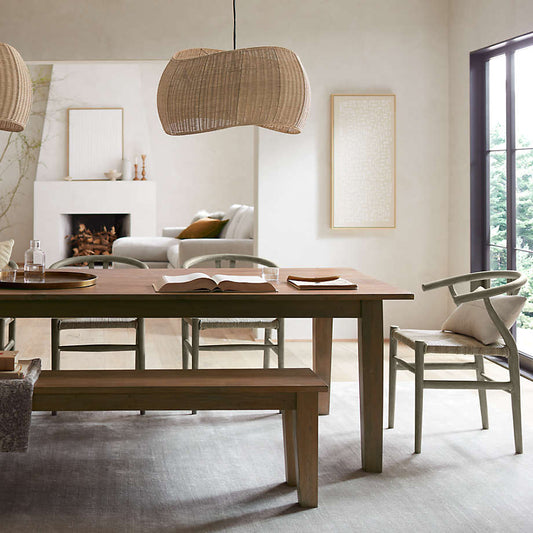
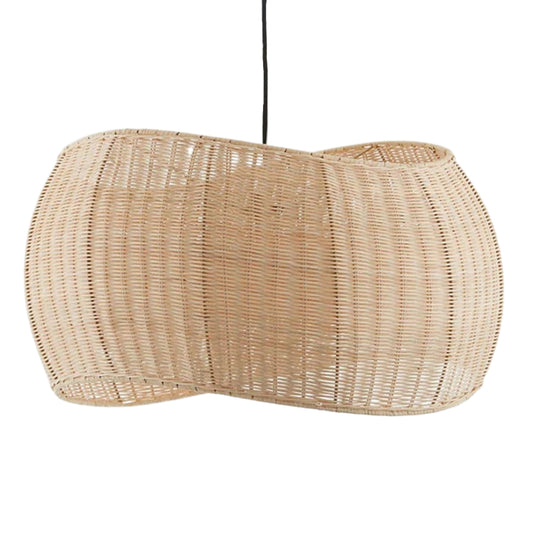 Selling FastIndochinaLight
Selling FastIndochinaLight
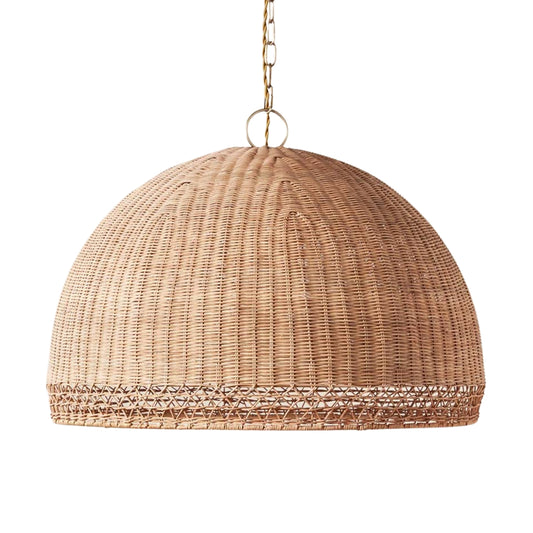 Selling FastIndochinaLight
Selling FastIndochinaLight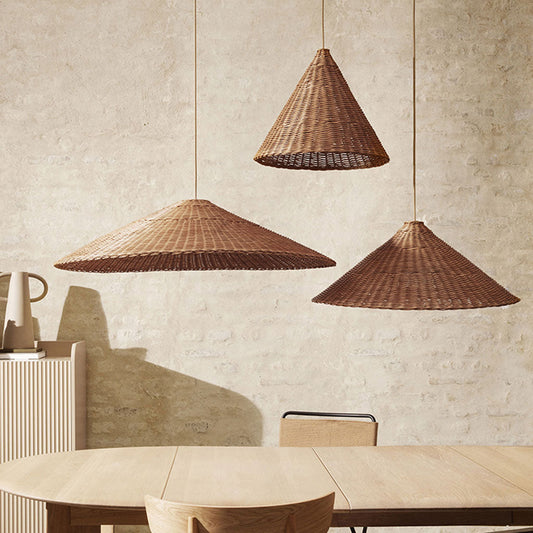
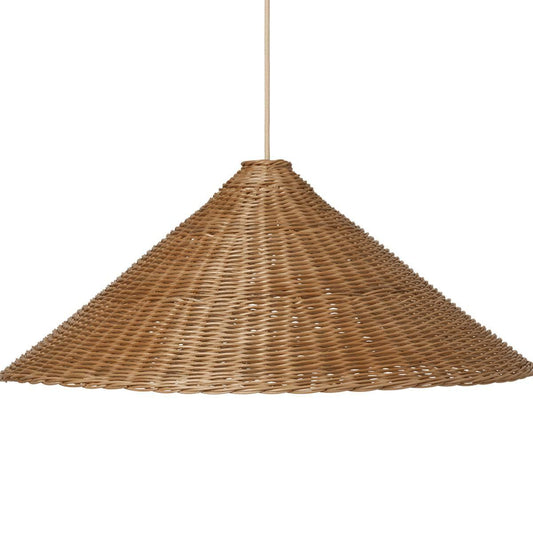 Selling FastIndochinaLightSave 17%
Selling FastIndochinaLightSave 17%
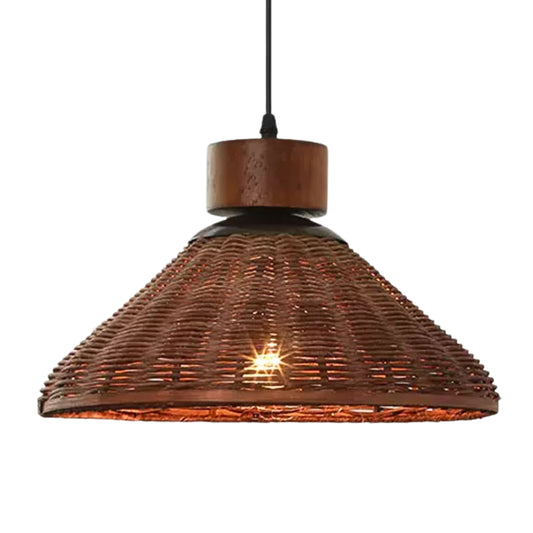 Selling FastIndochinaLight
Selling FastIndochinaLight
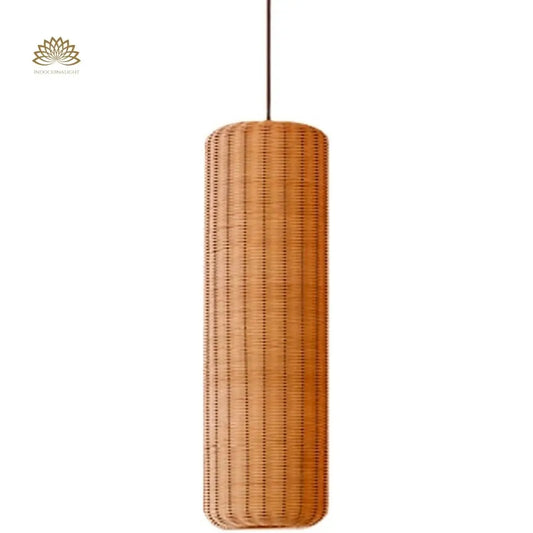 Selling FastIndochinaLight
Selling FastIndochinaLight
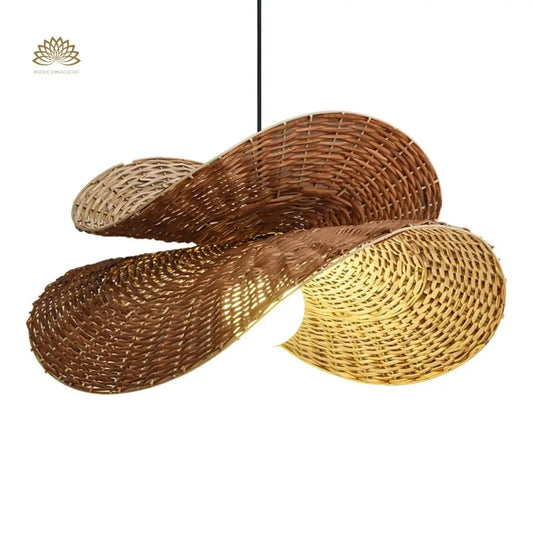 Selling FastIndochinaLight
Selling FastIndochinaLight
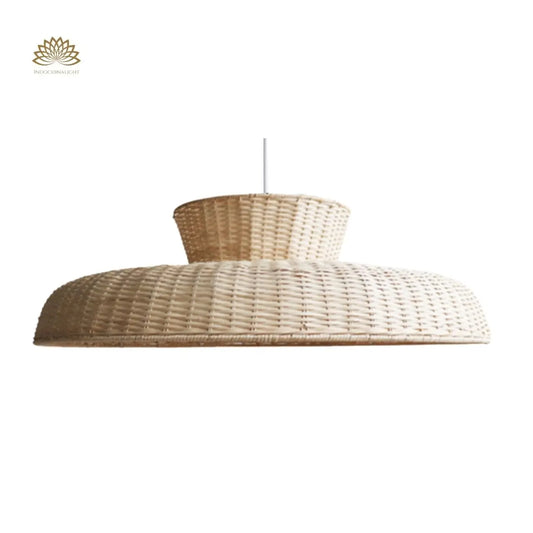 Selling FastIndochinaLight
Selling FastIndochinaLight
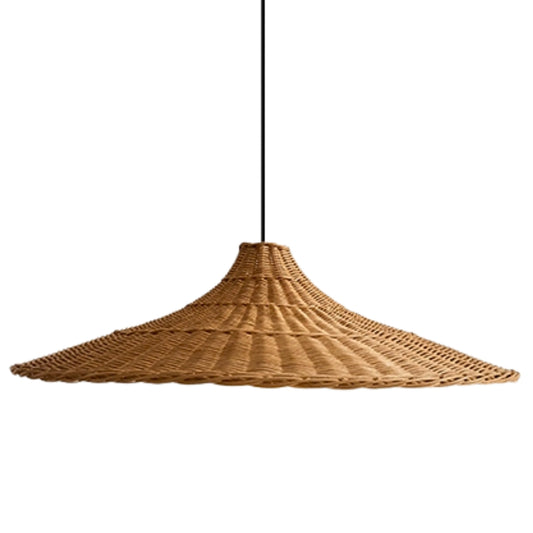 Selling FastIndochinaLight
Selling FastIndochinaLight
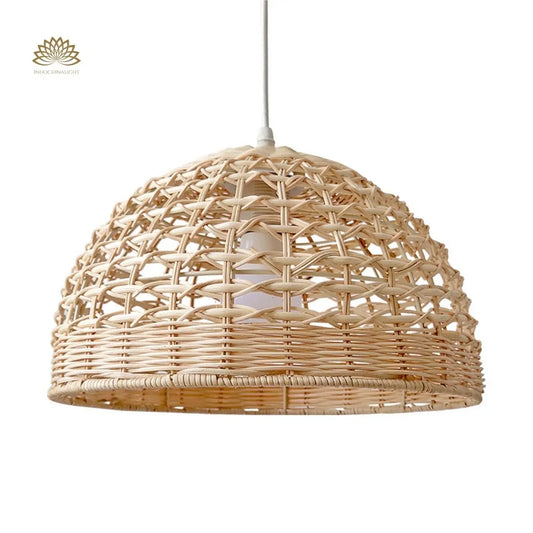 Selling FastIndochinaLight
Selling FastIndochinaLight
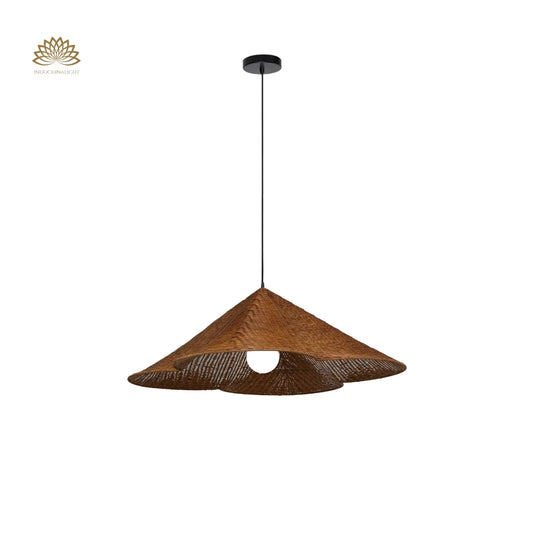 Selling FastIndochinaLight
Selling FastIndochinaLight
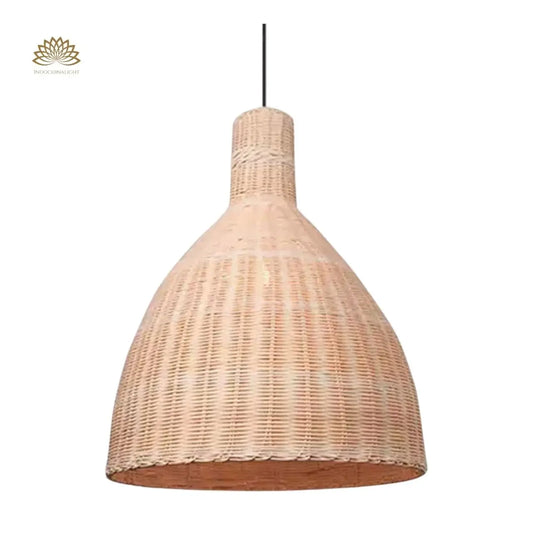 Selling FastIndochinaLight
Selling FastIndochinaLight


































